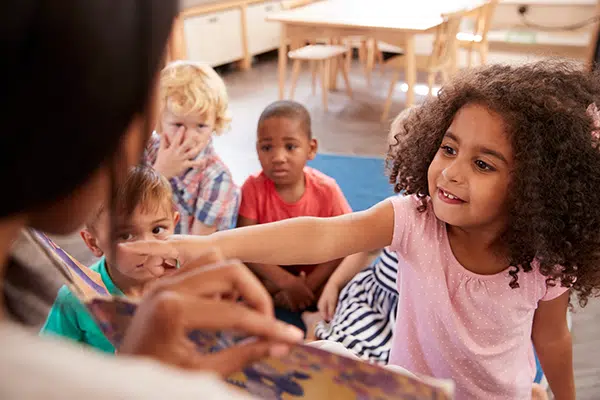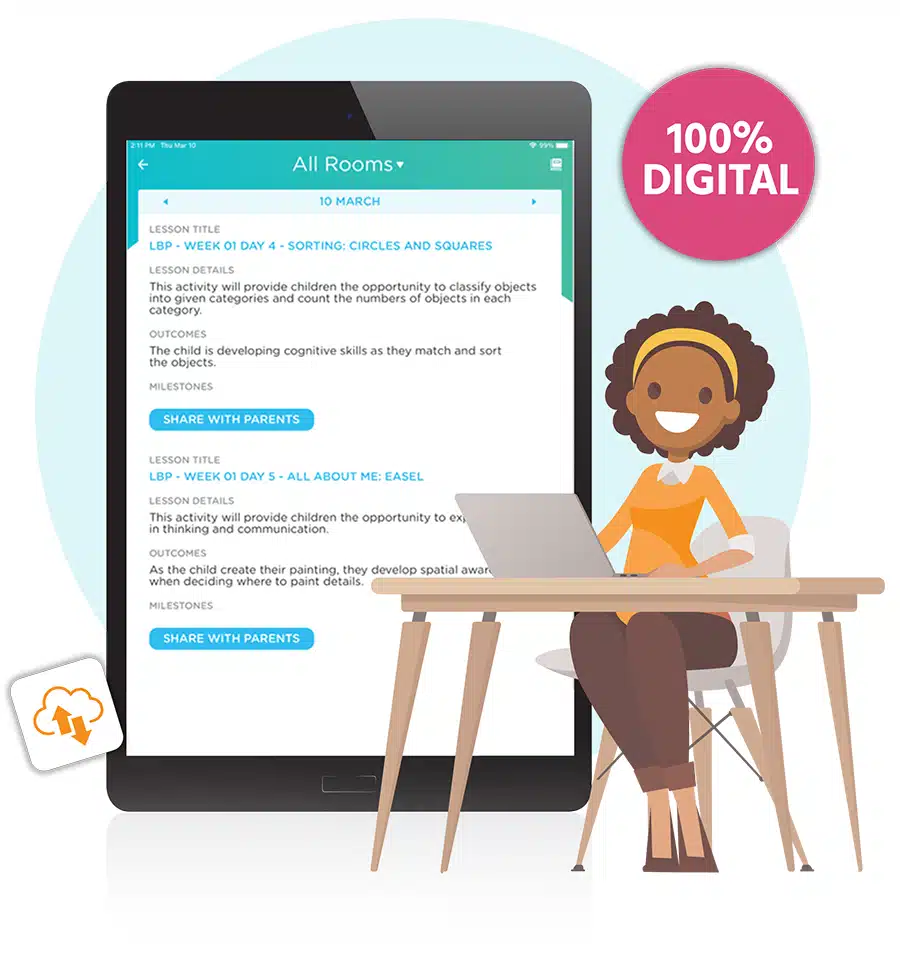Teaching preschoolers about feelings, emotions and self-regulation is how you can equip young learners with the ability to understand their emotions. Recognizing and regulating feelings are foundational skills for their personal, social and academic development. Here’s how you can teach preschoolers about feelings and why it’s vital for their growth!

The Importance of Teaching Kids About Feelings
Emotional intelligence refers to the ability to perceive, interpret, demonstrate, control, evaluate and use emotions to communicate with and relate to others effectively and constructively.
These skills are crucial for personal and professional success! By teaching children about feelings, you help them foster their emotional intelligence and also equip them with the tools needed for better mental well-being, relationship building and problem solving.
One of the biggest benefits of emotional education is that it teaches improved social skills. Children who understand their own emotions are better able to empathize with others, which leads to more positive social interactions. And recognizing and naming emotions help children become more self-aware, which is the first step in developing self-regulation skills.
When children can articulate what they’re feeling, they communicate more effectively to reduce misunderstandings and conflicts. Emotional knowledge allows children to handle challenging situations and bounce back from setbacks more quickly.
And emotional regulation can lead to a better focus in the classroom and a positive attitude toward learning!
How to Explain Feelings and Emotions to Preschoolers
Let’s look at some ways you can explain feelings and emotions to preschoolers!
Storytelling

Use storybooks with characters who experience a range of emotions. Exploring picture books with adults gives children opportunities to identify feelings they may not have yet identified in themselves, according to Heart-Mind Online.
Preschoolers can learn to identify emotions from the facial and body language cues of the characters in stories and also learn how those characters manage their different emotions.
Visual Aids
Use feeling charts or flashcards with facial expressions.
Incorporating emotion flashcards into naturally occurring activities allows children to practice recognizing and understanding emotions in various contexts. This promotes generalization of skills, helping children transfer their knowledge of emotions from flashcards to real-life situations, according to the Different Roads to Emotions blog.
Check out these examples of feeling charts to print or to give your ideas!
Daily Check-ins
Encourage children to express how they feel at various points during the day. A feelings check in station in the classroom is a great way to explore emotions and develop the emotional regulation.
Role-play
Dramatizing different scenarios can help children understand and articulate their feelings.

Self-Regulation Strategies for Preschoolers
Self-regulation is the ability to understand and manage your behavior and reactions to feelings and things happening around you. It includes being able to regulate reactions to emotions like frustration or excitement, calm down after something exciting or upsetting, focus on a task, refrain from impulsivity and become more thoughtful and intentional in interactions.
Here are some ideas that early childhood educators can do to help in the development of self-regulation:
Modeling Behavior: Exhibit self-regulation in your own conduct.
Providing Language: Teach children the vocabulary they need to describe their emotions.
Creating a Supportive Environment: Establish routines and expectations that provide a sense of safety and structure.
Teaching Breathing Techniques: Show children how deep breathing can help them calm down.
Encouraging Problem-Solving: Guide children through processes of making choices or coming up with solutions when they’re upset.
Self-Regulation Activities for Preschoolers
To reinforce these strategies, engaging activities such as the following can be integrated into the learning experience:
Freeze Dance: A game where children dance when the music plays and freeze when it stops, promoting impulse control.
Traffic Lights Game: Using red, yellow and green signals to help children learn when to stop, slow down, or go mirror self-regulation in real-life situations.
Feelings Sorting Games: Sorting emotions into different categories, which helps them recognize and label their own emotions.
Breathing Buddies: Lying down with a stuffed animal on their belly, children watch it move up and down as they breathe, teaching them to focus and relax.
How a Digital Curriculum Designed for ECE Can Help!
Coming up with developmentally appropriate activities for children in child care settings can be time-consuming and difficult. That’s where Procare Early Learning, an online curriculum solution to address the needs of daycares, preschools and early learning teachers, can help!

This 100% digital offering is seamlessly embedded into Procare and gives teachers everything they need to provide high-quality instruction for infants to pre-K at their fingertips.
No more expensive books, binders or kits, no long hours preparing lessons and no stress for the teachers – just log in, organize pre-loaded lessons per classroom and by age group and let the learning begin!
Want to see how much time and money your center could save with a digital curriculum? Use this calculator to find out :



